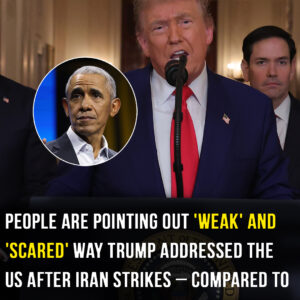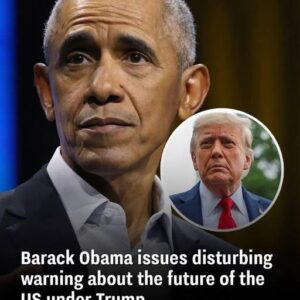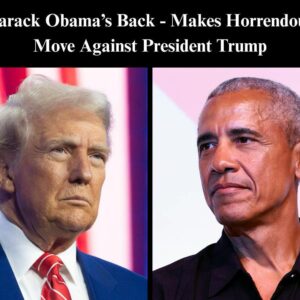Critical Maritime Chokepoint Threatens World Energy Security Following Operation Midnight Hammer
The international community faces a potential economic catastrophe as Iran contemplates closing the Strait of Hormuz in retaliation for recent U.S. military strikes on Iranian nuclear facilities. The United States has made an urgent diplomatic appeal to China, requesting Beijing’s intervention to prevent Iran from shutting down this critical maritime passage that serves as the lifeline for global energy supplies.
Strategic Significance of the Strait of Hormuz
The Strait of Hormuz represents one of the world’s most strategically important waterways, serving as the sole maritime passage connecting the Persian Gulf to international waters. This narrow 21-mile channel between Iran and Oman has earned recognition as the most critical chokepoint for global energy transportation, with approximately 20 percent of the world’s oil and natural gas supplies transiting through its waters daily.
The strategic importance of this waterway cannot be overstated, particularly given that nearly half of the world’s proven oil reserves are concentrated in the Middle East, primarily in Saudi Arabia and Iran. Any disruption to oil movement through the Strait of Hormuz would create immediate ripple effects across international energy markets, potentially triggering a global economic crisis comparable to or exceeding previous oil shocks that have historically destabilized world economies.
The geographical positioning of the strait places Iran in a unique position of leverage, as the country controls the northern coastline and possesses the military capability to effectively close the passage to commercial shipping. This strategic advantage has long been recognized by Iranian leadership as a powerful deterrent against foreign military action and a potential retaliation mechanism in times of conflict.
Operation Midnight Hammer: Escalation and Consequences
President Donald Trump’s decision to authorize Operation Midnight Hammer marked a dramatic escalation in U.S.-Iran tensions and fundamentally altered the strategic calculus in the Middle East. The operation involved a massive deployment of 125 B-2 stealth bombers that targeted three major Iranian nuclear facilities, representing one of the largest military operations conducted by the United States in recent years.
Trump has publicly celebrated the mission’s success, claiming that the targeted sites were “obliterated” and sustained “extremely severe damage.” The operation specifically targeted Iranian nuclear infrastructure that U.S. intelligence agencies assessed as being central to Iran’s alleged nuclear weapons development program. However, Iranian officials have disputed these claims regarding the extent of damage, creating uncertainty about the actual impact of the strikes on Iran’s nuclear capabilities.
The timing and scale of Operation Midnight Hammer reflect the Trump administration’s assessment that diplomatic solutions had been exhausted and that military intervention was necessary to prevent Iran from achieving nuclear weapons capability. This decision represents a significant departure from previous U.S. approaches to the Iranian nuclear issue, which have typically relied on economic sanctions and multilateral diplomatic pressure.
China’s Critical Role in Crisis Prevention
The United States’ appeal to China reflects Beijing’s unique position as Iran’s largest oil customer and most significant economic partner. China’s influence over Iranian decision-making processes has grown substantially in recent years, particularly following the expansion of bilateral trade relationships and strategic partnerships between the two nations.
U.S. Secretary of State Marco Rubio made a direct public appeal to Chinese leadership during a Fox News interview, stating: “I encourage the Chinese government in Beijing to call them [Iran] about that, because they heavily depend on the Straits of Hormuz for their oil.” Rubio’s comments underscore the recognition within the Trump administration that China possesses sufficient economic leverage over Iran to potentially influence Tehran’s strategic decisions.
The Secretary of State further emphasized the global implications of a potential strait closure, noting that “it would hurt other countries’ economies a lot worse than ours.” This assessment reflects the reality that while the United States has diversified its energy sources and reduced dependence on Middle Eastern oil, many other nations, particularly in Asia and Europe, remain heavily reliant on energy supplies that transit through the Strait of Hormuz.
China’s response to this appeal will likely be influenced by several competing considerations. Beijing’s economic interests clearly favor maintaining open shipping lanes and stable energy supplies. However, China also maintains strategic partnerships with Iran and may be reluctant to appear to be pressuring Tehran at the behest of Washington, particularly given ongoing tensions in U.S.-China relations.
Economic Implications and Market Reactions
The mere threat of Strait of Hormuz closure has already generated significant market volatility, with oil prices experiencing sharp increases following Operation Midnight Hammer. Benchmark Brent crude prices soared to their highest levels in five months, demonstrating the market’s sensitivity to potential supply disruptions in this critical region.
Financial analysts and energy experts have warned that a prolonged closure of the strait could trigger oil price spikes exceeding $100 per barrel, with cascading effects throughout the global economy. Such price increases would impact transportation costs, manufacturing expenses, and consumer goods prices worldwide, potentially triggering inflationary pressures that could destabilize economic recovery efforts in numerous countries.
The economic implications extend beyond immediate energy costs to encompass broader trade disruptions. The Strait of Hormuz serves not only as an energy transit route but also as a critical pathway for various commercial goods traveling between Asia, Europe, and other global markets. A closure would necessitate costly alternative shipping routes, increasing transportation times and expenses for international trade.
European nations would face particularly severe challenges, as many EU countries lack significant domestic energy production and rely heavily on imports that transit through the Persian Gulf. Similarly, major Asian economies including Japan, South Korea, and India would confront immediate energy security challenges that could undermine economic stability and growth prospects.
Iranian Parliamentary Action and Decision-Making Process
According to reports from Iran’s state-run Press TV, the Iranian parliament has approved a measure to close the Strait of Hormuz in response to U.S. military action. However, the final authority for implementing such a decision rests with Iran’s Supreme National Security Council, which includes senior military and political leadership.
This decision-making structure reflects the complexity of Iranian governance, where multiple institutions must coordinate on matters of national security and foreign policy. Supreme Leader Ayatollah Ali Khamenei, who has served as both head of state and commander-in-chief since 1989, ultimately holds decisive authority over such strategic decisions.
The parliamentary vote represents a significant escalation in Iranian rhetoric and demonstrates the domestic political pressure facing Iranian leadership to respond forcefully to U.S. military action. However, the requirement for additional approval from the Supreme National Security Council suggests that Iranian decision-makers are carefully weighing the potential consequences of such a dramatic retaliation.
Trump Administration’s Mixed Messaging on Regime Change
President Trump’s public statements following Operation Midnight Hammer have created confusion regarding American objectives in Iran. In a Truth Social post, Trump suggested the possibility of regime change, writing: “It’s not politically correct to use the term, ‘Regime Change’, but if the current Iranian Regime is unable to MAKE IRAN GREAT AGAIN, why wouldn’t there be a Regime change??? MIGA!!!”
This messaging contrasts sharply with statements from other senior administration officials who have emphasized more limited objectives. Defense Secretary Pete Hegseth insisted that the strikes “was not and has not been about regime change,” characterizing the operation as a “precision operation” focused specifically on Iran’s nuclear program.
Vice President JD Vance echoed similar sentiments, stating that the United States was “not at war with Iran, we’re at war with Iran’s nuclear programme.” Secretary of State Rubio also emphasized that the nation was “not looking for war in Iran,” despite the scale and impact of recent military operations.
This divergence in messaging reflects potential disagreements within the administration regarding long-term objectives and strategy toward Iran. The inconsistency may also complicate diplomatic efforts to de-escalate tensions and could influence Iranian calculations regarding appropriate responses to U.S. actions.





